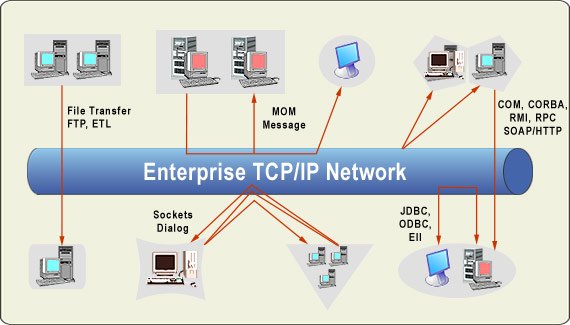Most integration solutions are still developed using traditional tools and designs, in which all intelligence (data and logic) is held within the applications that participate in the integration; the middleware in a conventional integration network simply moves data between applications and people but is otherwise "dumb". Changes to business processes typically require recoding of one or more end-point application systems/adapters, inhibiting agility and slowing down the process of implementing new processes or updating existing processes.

Figure 1 : Traditional Integration uses a variety of Point-to-Point Communication Mechanisms
The focus of integration design is around whatever new application is required to enable a business process, while connections between the applications are based on a variety of lower-level protocols such as FTP, JDBC/ODBC, TCP/IP Sockets, COM/CORBA/RMI/RPC/HTTP, or a Message Oriented Middleware (MOM) protocol such as JMS, MSMQ or MQSeries. Even when relatively high-level MOM protocols are used, significant technical resources are required for implementation and the resulting processes are typically very hard for business-analysts to modify without help from technical experts, resulting in decreased business agility.
Learn More:
 Japan
Japan Germany
Germany
